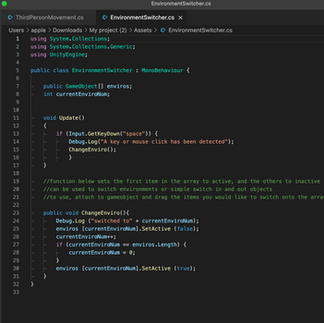Midterm Takeaway
- Yifeng Pan
- Mar 25, 2022
- 2 min read
Updated: Apr 21, 2022
When we started our brainstorming on this project, Katherine and I wanted to build scenes that players could explore. So, we decided to collect some free assets and establish worlds that are large enough to walk and look around. This idea extends to telling a story in a third-person role-playing game mode.
Making the game third-person sacrificed the possibility of making it in virtual reality, but we think it helps the players to merge into the world and our storytelling better. The role the player experience is a chicken, an animal that used to dominate and live in nature and now lives in a prison-liked zoo. If the game is first-person-like, most will imagine themselves as human beings, dominating the other animals. In our initial ideas, the main character is a victim instead of the controller, so making it third person works better.
We append a third-person camera on the chicken, and its movements are controlled by arrow keys. The x and y movements of the mouse control the views. Pressing the space key can switch the environment. After setting up the main character and its movement, we set up the worlds with the assets we downloaded, which is time-consuming but exciting.
One takeaway we have is that different techniques can bring a different kinds of immersions. In general, we find virtual reality more immersive, but sometimes other methods can do better than VR. How to tell a good story and which technique to use are essential when building an immersive experience. Also, during this project, the power and potential of Unity impress me. We realized that one could make a playful and competitive game or story with only Unity. We are looking forward to learning more about it in the future.











